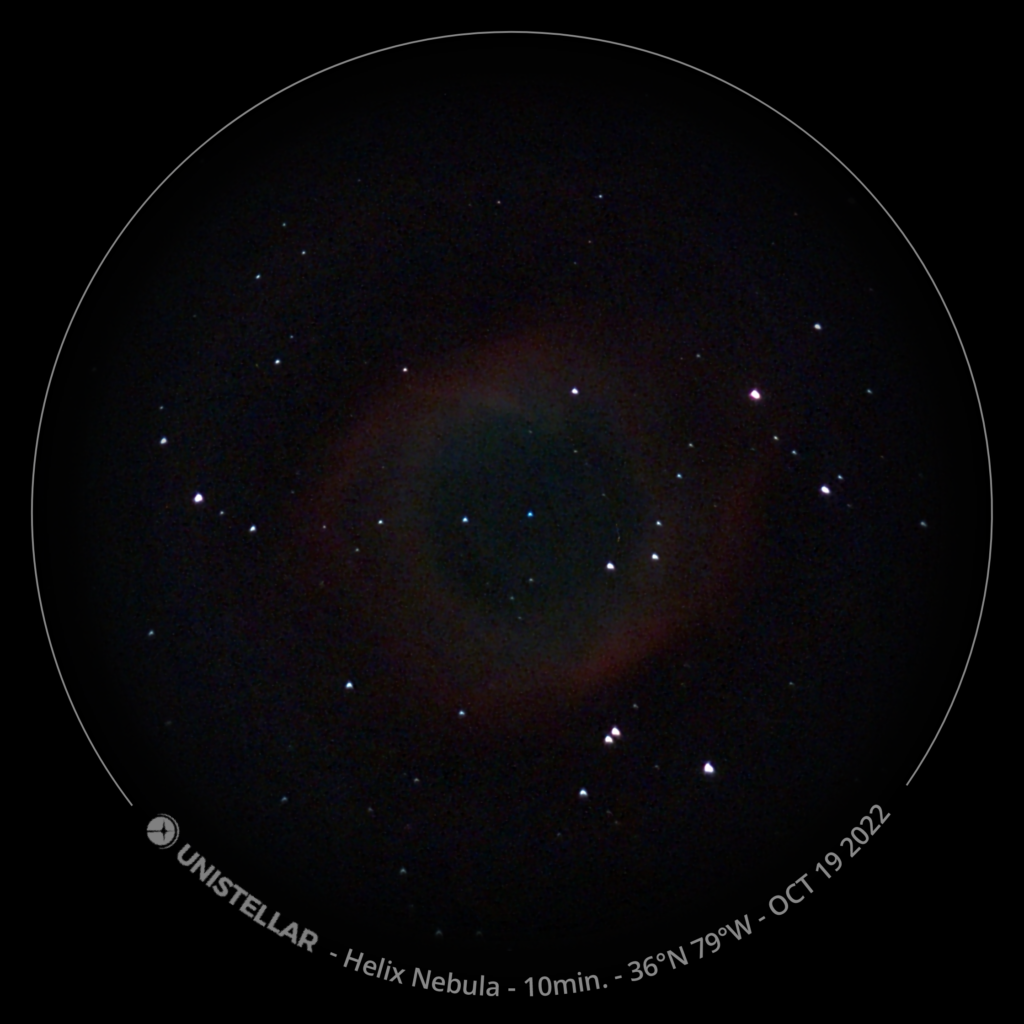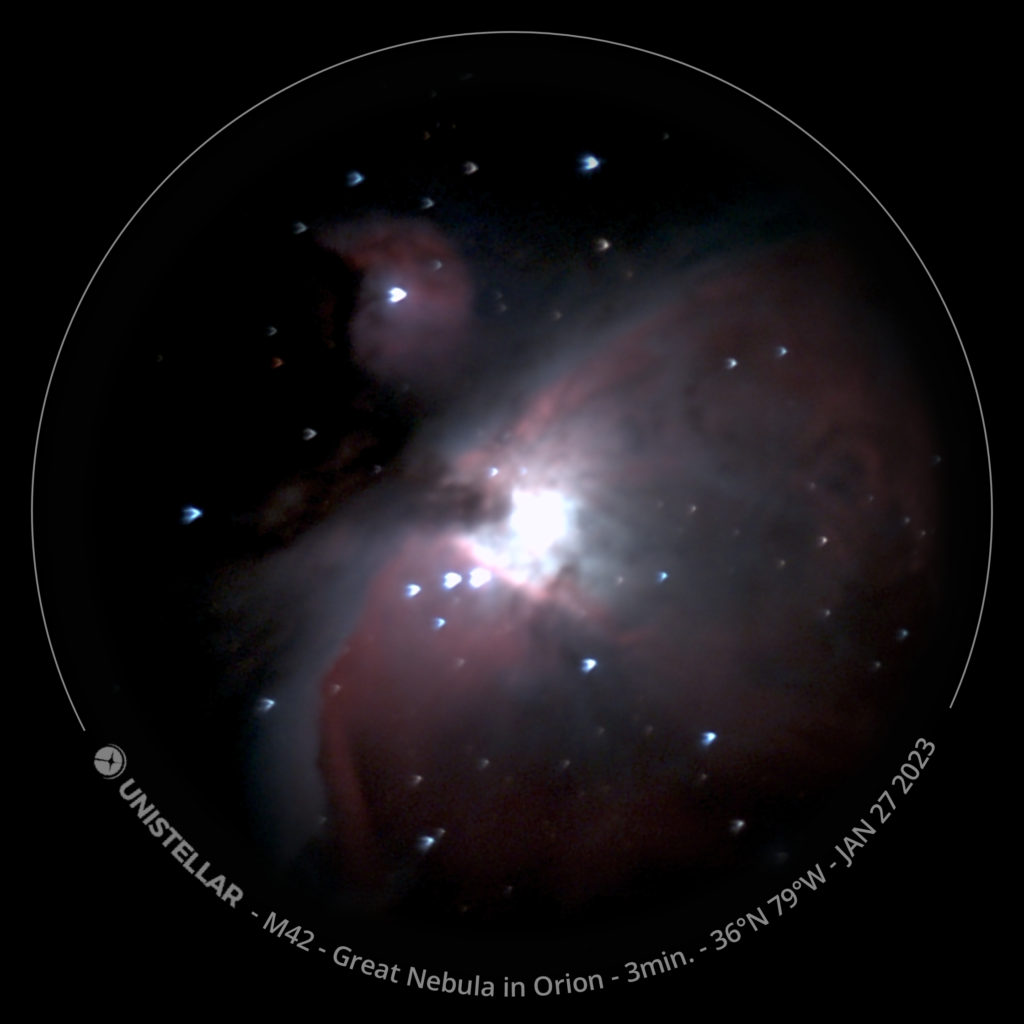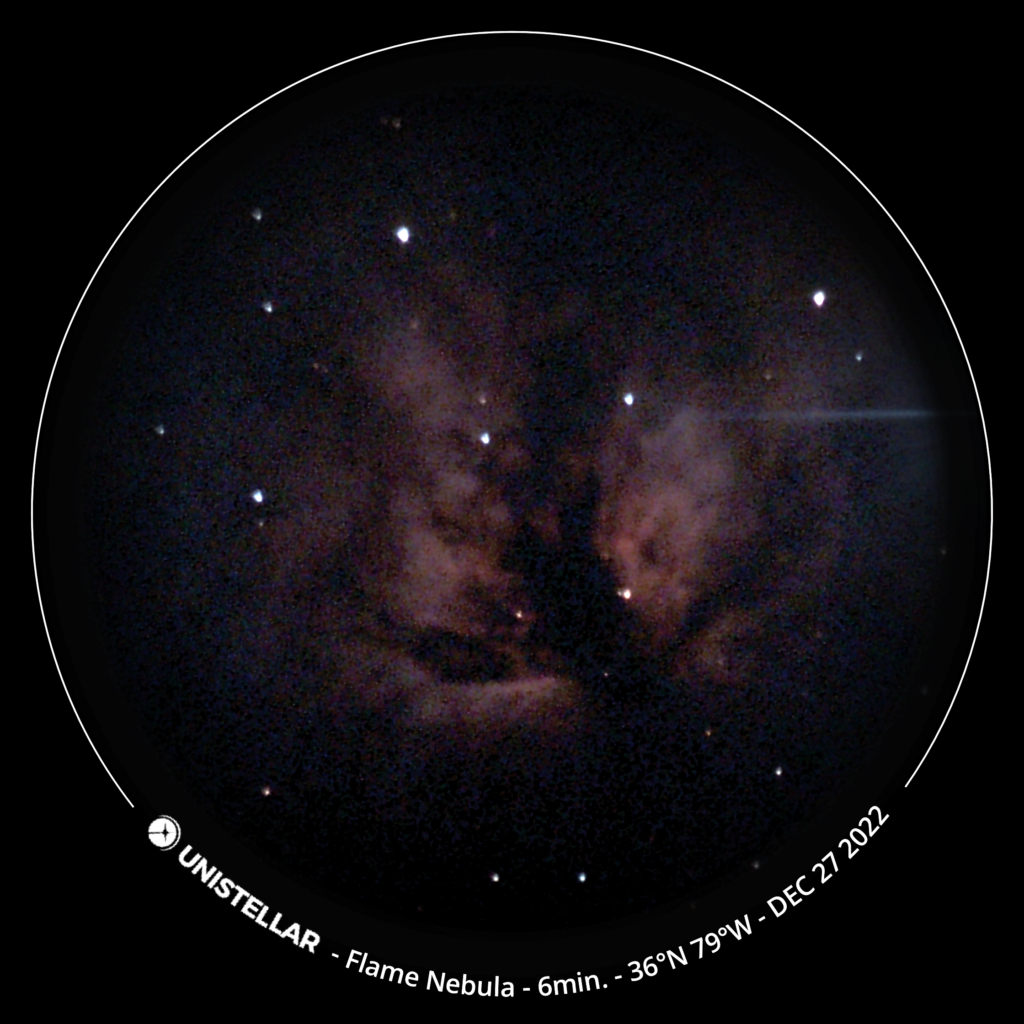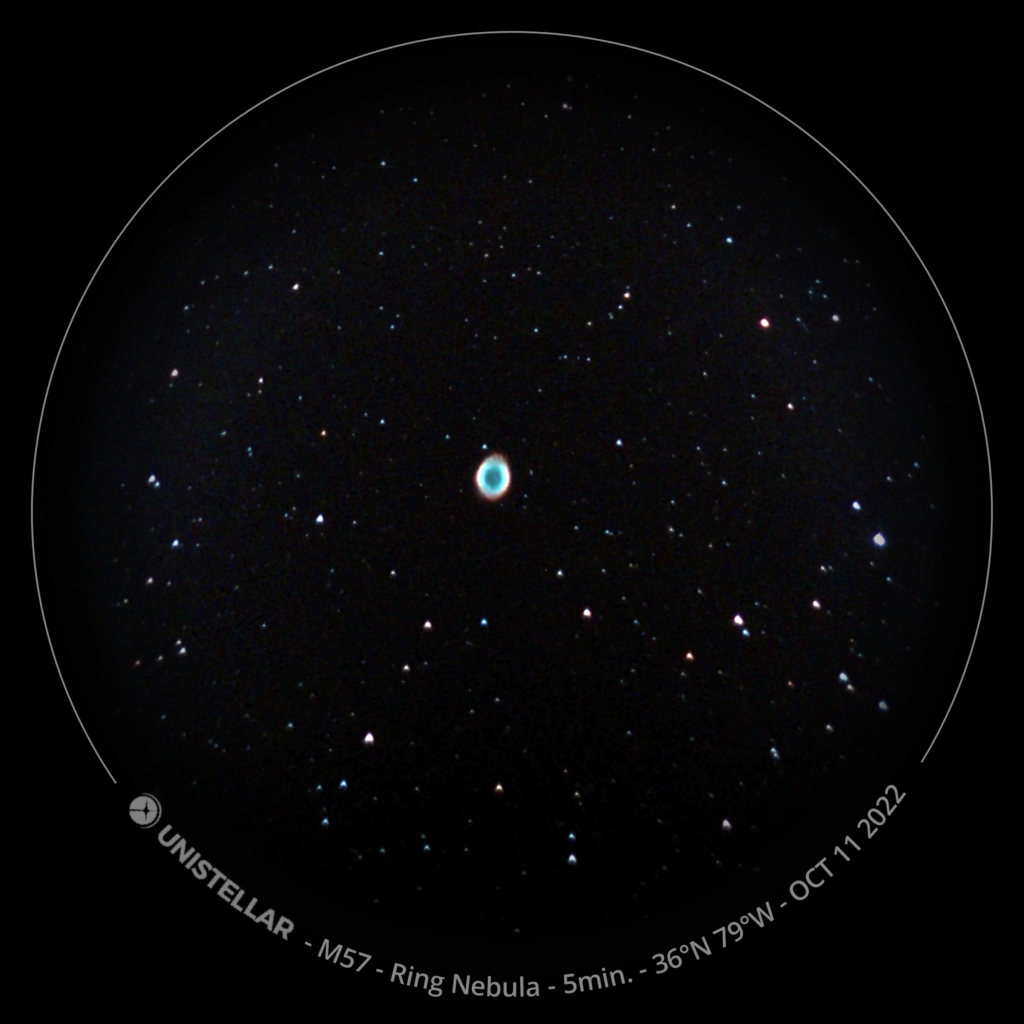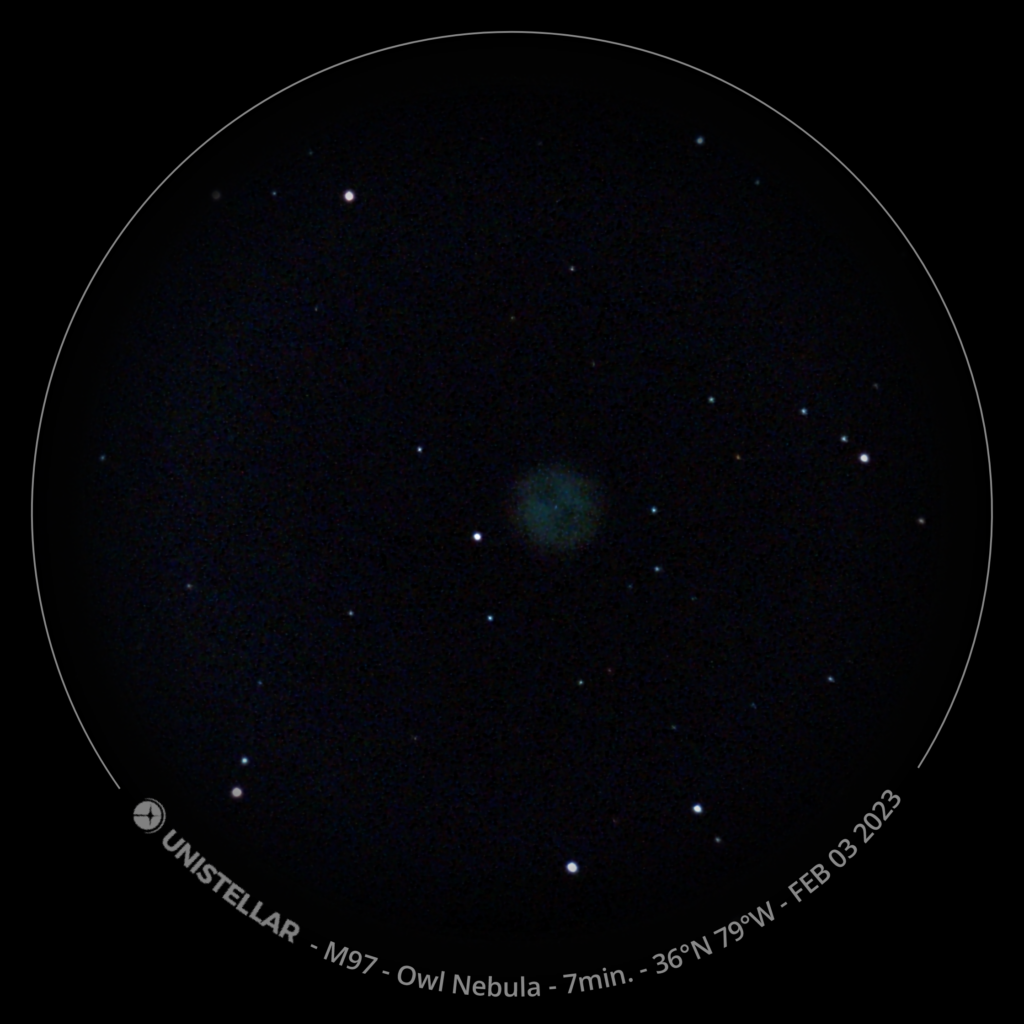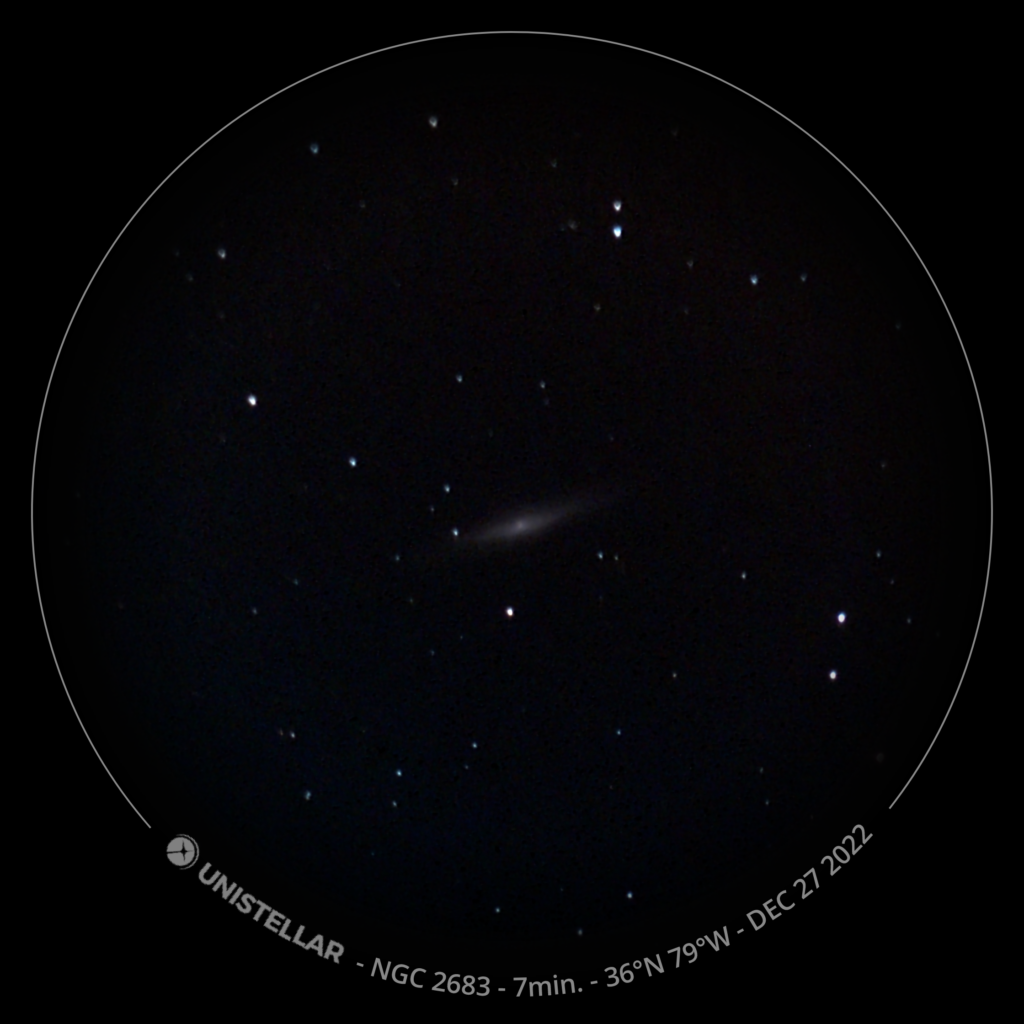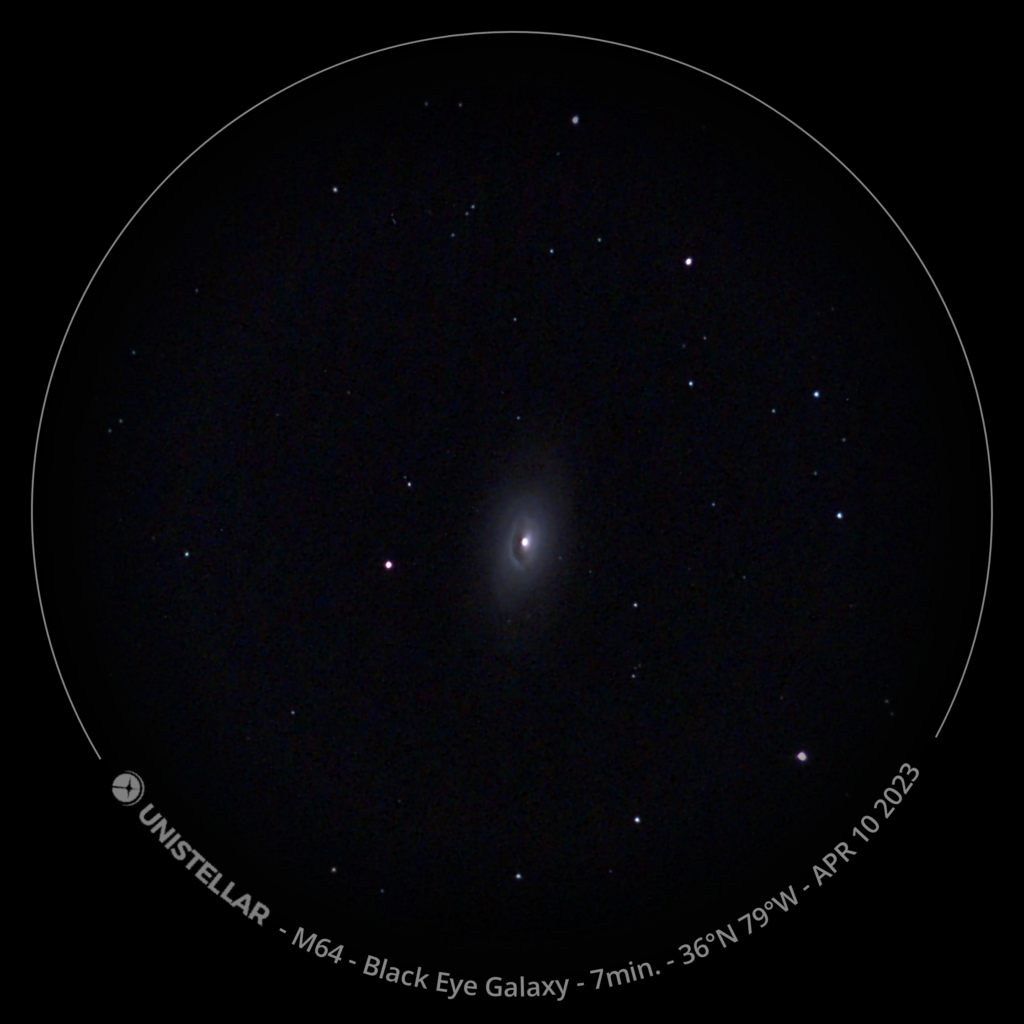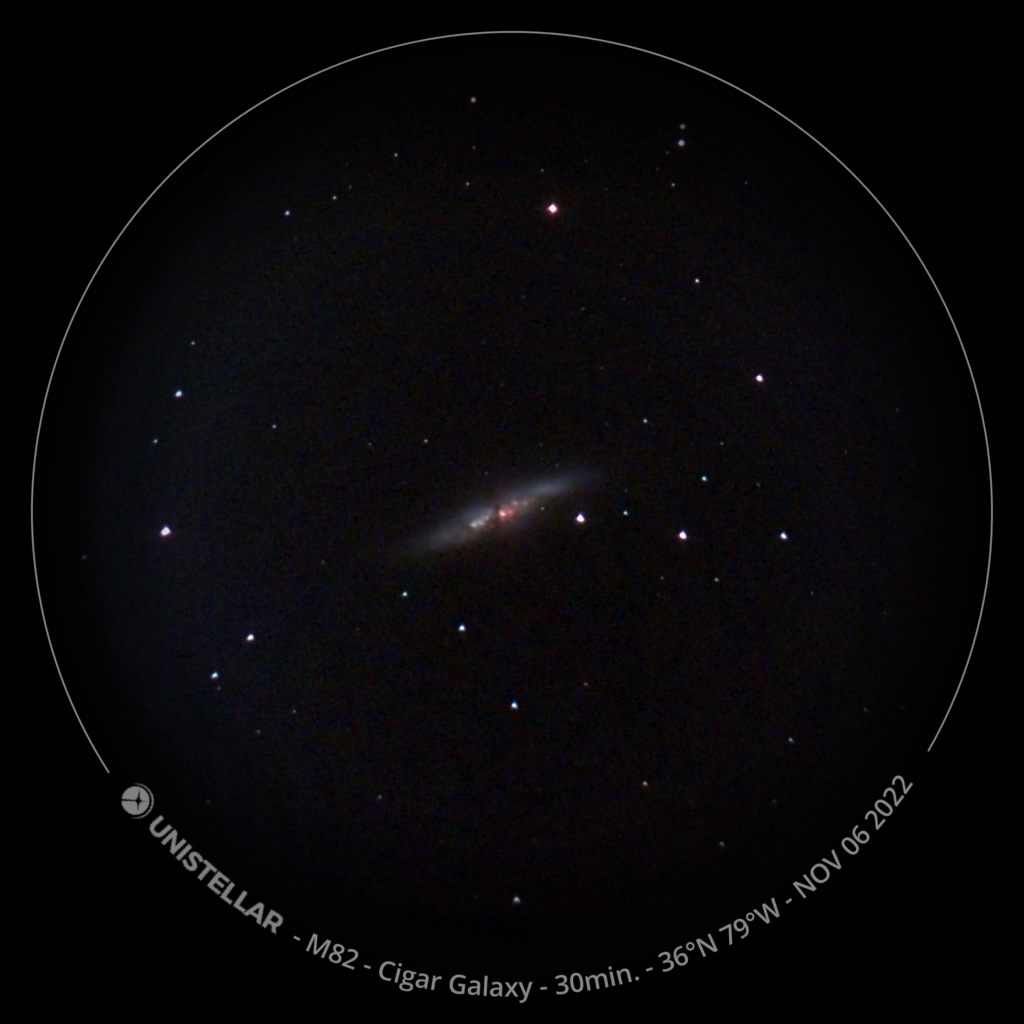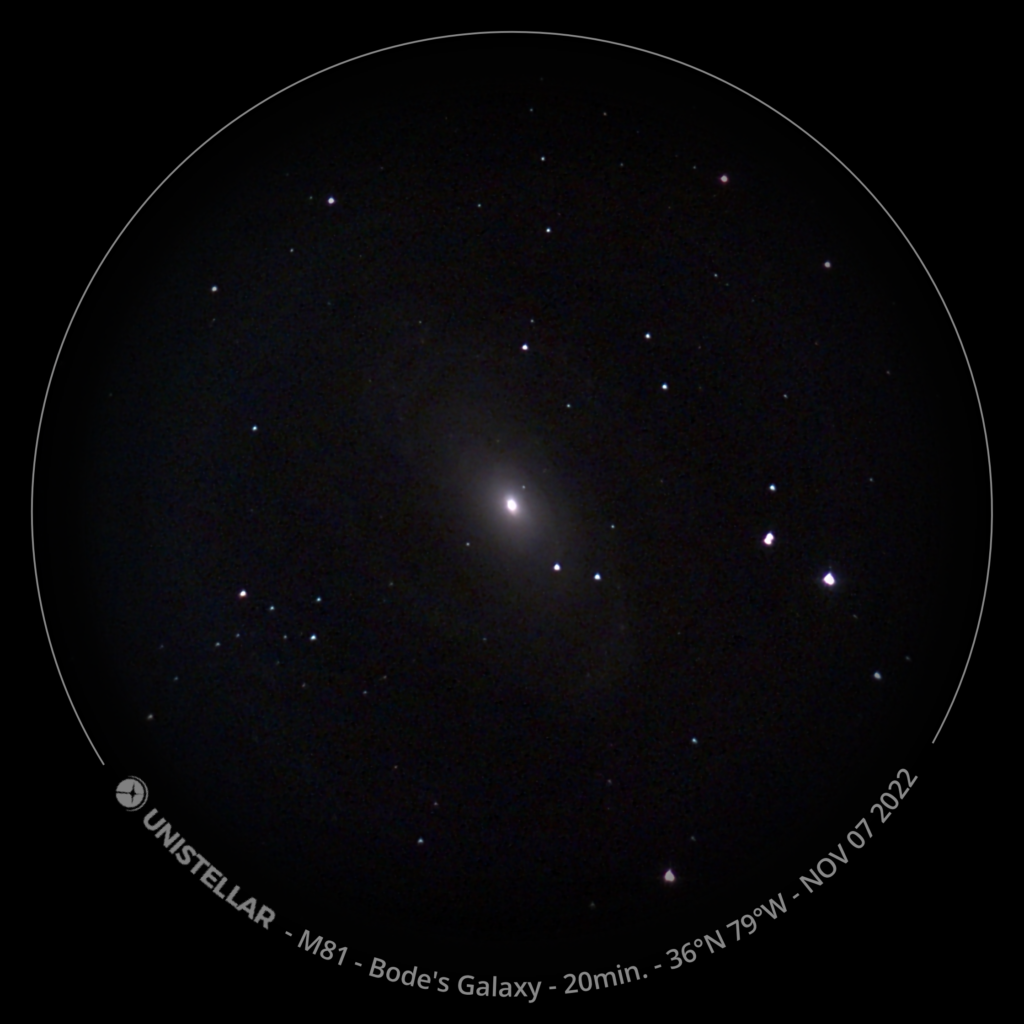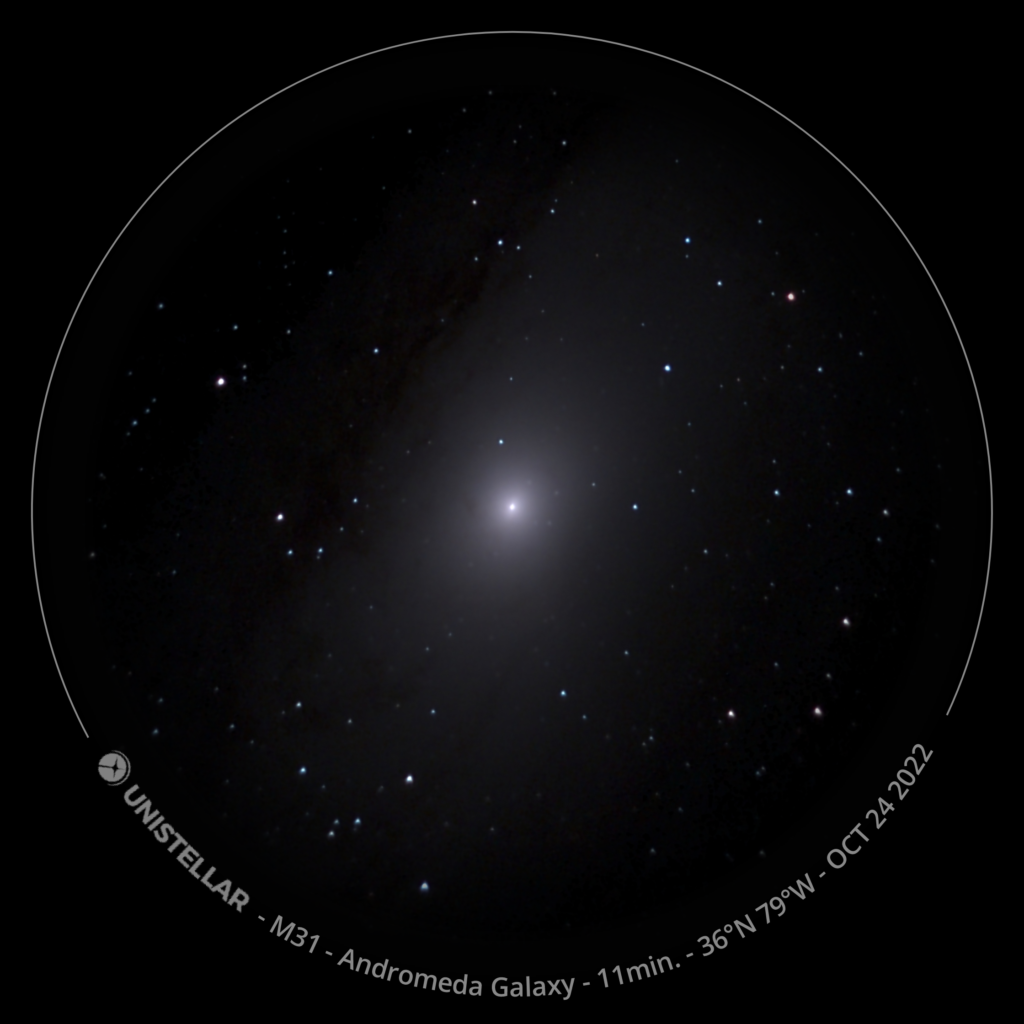There is so much beauty in the heavens that we cannot see with just our own eyes. Yes, these objects are quite distant, and they are very faint. The nebulae in my collection are in our own Milky Way galaxy, thousands of light years away. The galaxies in my collection are tens of millions of light years away.
To capture the colorful nebulae, the telescope needs to receive photons over several seconds or minutes. And all of a sudden, the beauty appears on the screen. Light enters the top of the “reflecting telescope,” bounces off of the concave mirror at the bottom of the telescope, and hits the electronic sensor near the top of the telescope. The sensor is similar to those used for the cameras in our cell phones. At that point is when the electronics kick in. There is not an eyepiece on the telescope. Instead, it transmits the electronic image to my cell phone. So, the scope is controlled by my cell phone – its movements, and the display of its images.
I am capturing two types of objects. Nebulae (that’s the plural of nebula) are collections of gases and dust thrown out by the explosion of a dying star. Other nebulae are regions where new stars are beginning to form, by coalescing the dust clouds in the region.
Galaxies are collections of billions of stars (suns), like our own Milky Way.
Distances and sizes are presented in terms of light-years: the distance that light can travel in one year. The Earth’s Milky Way Galaxy is 105,700 light-years across. I strong light shined from one edge of the Milky Way would need 105,700 years for the light to reach the farthest edge.
Please note that I have not yet performed post-processing on these images. The telescope involves a lot of electronics in order to capture these images. “Noise” needs to be removed, stars need to be cleaned up, and the colors of the nebulae need to be enhanced. There’s more work to be done before these will look outstanding!




